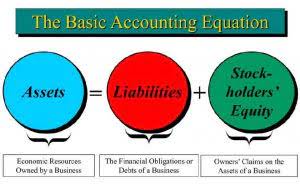Mixed Cost Definition, Example
Content

All costs that do not fluctuate directly with production volume are fixed costs. Fixed costs include various indirect costs and fixed manufacturing overhead costs. Variable costs include direct labor, direct materials, and variable overhead. When cost behavior is discussed, an assumption must be made about operating levels.

Discretionary fixed costs usually arise from annual decisions by management to spend on certain fixed cost items. Examples mixed cost of discretionary costs are advertising, insurance premia, machine maintenance, and research & development expenditures.
Merchandising Mixed Costs
Cost 2 is a fixed cost because as the number of units produced changes, total costs remain the same and per unit costs change. Cost 3 is a mixed cost because as the number of units produced changes, total cost changes and per unit cost changes. The only way to accurately predict costs is to understand how costs behave given changes in activity. To make good decisions, managers must know how costs are structured . The next section explains how to estimate fixed and variable costs, and how to identify the fixed and variable components of mixed costs. For example, a retailer must pay rent and utility bills irrespective of sales.
- Simple linear variant – The simple linear is also one of the common methods of regression analysis.
- On the other hand, the cost of fueling the machine and the cost of the thread used are examples of variable costs.
- Using the high-level activity and the low-level activity, a formula is created, which helps separate the mixed costs into different components.
- Being a new hire at the company, the manager assigns you the task of anticipating the costs that would be incurred in the following month .
- The company has to pay a fixed lease rental of $1,000 every month and it further incurs a running cost of $0.8 per km travelled.
- It is important to note that the term variable refers to what happens to total costs with changes in activity, not to the cost per unit.
SIB provides a valuable service, and we would not hesitate to recommend them. I was very pleasantly surprised when your team was able to find rates even more competitive than the discounted rates we were paying before. We feel like your review has made us among the most efficiently-operating Burger King franchisees in the country. SIB started the process by listening to our thoughts and concerns, and took the time to understand our business. They were very attentive to our specific circumstances and the existing relationships we have with our vendors and service providers.
Mgc Insurance Defense
The depth of SIB’s expertise was especially clear in the area of telecommunications, where they identified many potential savings opportunities adding up to tens of thousands of dollars a year… SIB’s approach was very detailed and comprehensive, which is what enabled them to create such impressive results. The SIB team has helped 98% of our clients reduce indirect expenses without changing your vendors or operations. An increase in the number of deliveries being made will increase the expense of gasoline, but not the cost of the insurance, depreciation, or loans. Because Variable Costs are tied to production, they are usually thought of as a constant amount expensed per unit produced. We buy the land, finance the deal, and then we have the best builders build under bond at a fixed cost.
- Variable Cost Per UnitVariable cost per unit refers to the cost of production of each unit produced, which changes when the output volume or the activity level changes.
- An example of a variable cost that can be eliminated is commission.
- A variable cost is an ongoing cost that changes in value according to factors like sales revenue and output.
- The assumption is that total fixed costs and per unit variable costs will always be at the levels shown in regardless of the level of production.
The $400 is the fixed component as you’ll be paying for it no matter how many gallons of water you consume. Some costs go up or down depending on the level of sales or production. I consider my company to be frugal, but there’s simply no way we could have devoted the resources to an internal review the way SIB could, with their staff and their expertise. The fact that SIB was willing to offer all this with no upfront costs was icing on the cake. SIB’s team went to work for us and quickly found savings that we began benefiting from right away… I feel much more confident now about the funds we spend toward our operating costs, because I know we’re getting a good value. I especially appreciated the breadth of SIB’s service offerings….
Account Analysis
If the production level increases, the variable cost’s proportion will increase at the same rate. An example of mixed cost is telephone expense because it usually consists of a fixed component such as line rent and fixed subscription charges as well as variable cost charged per minute cost. For example, the rent on a building will not change until the lease runs out or is re-negotiated, irrespective of the level of business activity within that building. Examples of other fixed costs are insurance, depreciation, and property taxes. A fixed cost is a cost that does not vary in the short term, irrespective of changes in production or sales levels or other measures of activity. Methods for separating mixed costs can be defined as the methods adopted by the business organization to separate the mixed cost into a variable or fixed cost. To compute the total cost, pick either the high or the low cost information .

After issuing detailed recommendations and renegotiating our pricing to be more competitive, these steps led to a nice overall decrease in our monthly bills, as well as our future outlays. SIB was able to identify thousands of dollars in annual savings on our electricity costs as well as our payroll processing services.
Примеры Для Fixed Cost
This makes the cost of water a mixed cost as it has variable and fixed components. The best way to deal with mixed costs in a budget is to use a formula in place of a single number for a mixed cost, with the cost automatically varying based on a designated activity level . This approach is more complicated, but yields budget figures that are more likely to match actual results.
Some cost accounting practices such as activity-based costing will allocate fixed costs to business activities for profitability measures. This can simplify decision-making, but can be confusing and controversial. Under full costing fixed costs will be included in both the cost of goods sold and in the operating expenses. In recent years, fixed costs gradually exceed variable costs for many companies. Firstly, automatic production increases the cost of investment equipment, including the depreciation and maintenance of old equipment.
- Not only did SIB remove these unused services to save us money going forward, but they also successfully obtained credits for our past billing for the dead phone line.
- Some of the expenses are fixed because they do not change in total as the number of annual miles change.
- A mixed cost is a cost that has both the characteristics of variable and fixed costs.
- The calculation involves minimizing the sum of squares of the vertical distances between the data points and the cost function.
- Each observation’s total cost is aligned with the y-axis and is also aligned with the volume amounts indicated on the x-axis.
- Because it uses only two data values in its calculation, variations in costs are not captured in the estimate.
You are charged a variable cost of $1.50 for each unit produced over the 10,000 production ceiling. As the owner of a car dealership, you employ many different employees. Their responsibilities range from accountants in the finance department to the mechanics that work on the cars.
Variable Cost Definition
The high-low method assumes that fixed and unit variable costs are constant, which is not the case in real life. https://www.bookstime.com/ Because it uses only two data values in its calculation, variations in costs are not captured in the estimate.

The two most common variable costs are direct materials and direct labor. Where TMC is the total mixed cost, FC is the fixed component, vc is the variable cost per unit and Q is the output level. Some fixed costs are classified as committed fixed costs and some as discretionary fixed costs. Committed costs are costs that the management of an organization have a long-term responsibility to pay. The non-payment of committed costs can result in disruption of business activities and legal consequences apply if contractual costs and obligations are not met. Examples include depreciation, rent, insurance, property taxes, etc. Semi variable costs refer to costs incurred by a company, which is a combination of fixed and variable costs.
The business managers may use different methods for separating the mixed cost. The mixed cost has to be separated into the fixed or variable costs. Business managers need to know that what proportion of fixed and variable costs are included in mixed costs. It is required so that the business managers can easily prepare business budgets and also conduct other business planning.
What Is Mixed Cost?
Assume the cost of direct materials for each bike at Bikes Unlimited is $40. If Bikes Unlimited produces one bike, total variable cost for direct materials amounts to $40. If Bikes Unlimited doubles its production to two bikes, total variable cost for direct materials also doubles to $80. Variable costs typically change in proportion to changes in volume of activity.
- The y-axis measures the costs and the x-axis measures product or sales volume.
- These costs and variable costs have to be taken into account when a firm wants to determine if they can enter a market.
- Why did the analysis yield lower savings than the initial estimate?
- Fixed costs remain the same in total regardless of level of production, and variable costs change in total with changes in levels of production.
The profit is determined by deducting the total fixed cost from the contribution margin. The contribution margin is ascertained by deducting the total variable cost from sales. This is a long-term decision that will change the cost behavior patterns identified earlier. Variable production costs will no longer be $60 per unit, fixed production costs will no longer be $20,000 per month, and mixed sales compensation costs will also change. All these costs will change because the estimates are accurate only in the short term.
However, further analysis identified only $100,000 to $150,000 in cost savings. The range of activity for which the cost behavior patterns are likely to be accurate. A fixed cost that can be changed in the short run without having a significant impact on the organization.
These other methods generally have a higher fixed cost, but a lower variable cost than metal spinning. This is fine until the company starts to reach its limit in how much it can produce . Now the company must hire additional inexperienced employees or pay its current employees overtime, which once again drives up the cost per unit. If the company produces more units each month, workers gain experience resulting in improved efficiency, and the per unit cost decreases . This causes the total cost line to flatten out a bit as the slope decreases.
A variable cost is any corporate expense that changes along with changes in production volume. A fixed cost would be monthly payments made as part of a service contract or licensing deal with the company that set up the software. Although this is probably a more accurate description of how variable costs actually behave for most companies, it is much simpler to describe and estimate costs if you assume they are linear. Now it is possible to estimate total production costs given a certain level of production . A fixed cost remains constant or does not vary with the output of an organization. For example, facility rent may remain the same whether the company produces 1 unit or 1 million units of product. Employees that are paid based on billable hours is another variable cost.
Learn The Basics Of Accounting For Free
You can account for mixed costs by breaking them into their fixed and variable components. To calculate the amounts, multiply your variable cost per unit of activity by the number of units, and add that to your fixed costs. Well, a mixed cost is an expense that has both a fixed cost and a variable cost. On the one hand, a variable cost is a cost that changes with production. On the other hand, a fixed cost is a cost that stays the same no matter the production. These costs cannot be eliminated because they have to be paid no matter what. Even if the car salesman does not sell any cars, the employer must still pay him a base salary.
